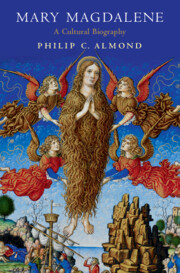1 - Who Was Mary Magdalene?
Published online by Cambridge University Press: 11 November 2022
Summary
Rome, in the year 590, was beset by the plague.1 On 25 April, Pope Gregory the Great (c. 540–604) called for a procession to take place at dawn. The faithful gathered in groups around the city, and, singing and praying, walked through the streets towards the church of Santa Maria Maggiore, one of the first churches built in Rome in honour of the mother of Christ. Eighty people died from the effects of the plague as they walked towards the church. Pope Gregory met them upon their arrival, and the procession continued on its way, preceded by a picture of the mother of Christ said to have been painted by Saint Luke. In the version of this legend in The Golden Legend of Jacobus de Voragine, we are told that ‘voices of angels were heard around the picture, singing’.2 The sacred image cleansed the air of infection, ‘as if the pestilence could not withstand its presence’.3 As the procession neared the fortress that was to become known afterwards as Castel Sant’Angelo, Saint Michael the archangel appeared sheathing his bloody sword. From this, Gregory understood ‘that the plague was at an end, as indeed it was’.4
- Type
- Chapter
- Information
- Mary MagdaleneA Cultural History, pp. 7 - 54Publisher: Cambridge University PressPrint publication year: 2022



